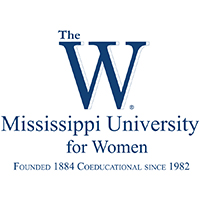Below is a summary of the abstract you submitted. Presenting author(s) is shown in bold.
If any changes need to be made, you can modify the abstract or change the authors.
You can also download a .docx version of this abstract.
If there are any problems, please email Dan at dar78@pitt.edu and he'll take care of them!
This abstract was last modified on April 23, 2025 at 2:11 p.m..

Bacteriophages are an abundant type of virus with the ability to infect and kill bacteria while using them to replicate through lytic or lysogenic processes. Bacteriophages play a key role in the regulation of bacterial populations in various environments and are being explored as potential tools in phage therapy. The aim of this study was to isolate, characterize, and manually annotate the genome of the bacteriophage MUWow collected from the campus of the Mississippi University for Women in Columbus, MS at GPS coordinates 33.493021 N, 88.419611 W. MUWow was isolated from a soil sample on Arthrobacter globiformis B-2979. Plaque assays, spot tests, and serial dilutions were used to purify the lysate and transmission electron microscopy (TEM) were performed to determine phage characteristics. MUWow DNA was sequenced at the Pittsburgh Bacteriophage Institute. Various bioinformatics tools, including PECAAN, GeneMarkS, Phamerator, BLASTP, HHPred, TMHMM, and SOSUI, were used to determine open reading frames and predict gene function. MUWow belongs to cluster AY and displays Siphoviridae morphology, with a head diameter of approximately 50 nm and a tail length of 100 nm. Its genome has 55,034 base pairs, a GC content of 62.4%, and 98 unconfirmed genes. A subset of these genes code for proteins that have determined functions, including minor tail proteins, membrane proteins, and helix-turn-helix DNA binding domain. The annotation of the MUWow phage will advance current understanding of bacteriophage diversity, and further bioinformatic analysis is being performed to explore the structure and function of predicted proteins.
